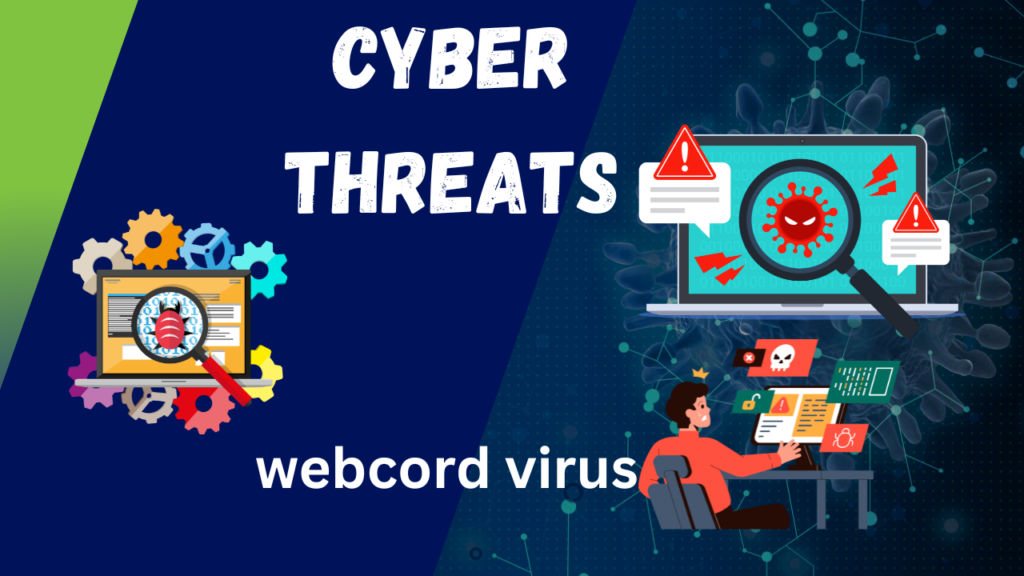Introduction:
In an era where our lives are increasingly intertwined with technology, the looming threat of cyberattacks is ever-present. Among these threats, the WebCord virus stands out as a significant concern. In this guide, we delve into the depths of the WebCord virus, exploring its origins, symptoms, preventive measures, effective removal techniques, real-life case studies, emerging trends, expert insights, and regulatory implications to empower users in safeguarding their digital assets.
Understanding WebCord Virus: Origins and Mechanics
- Origin Story
Emerging from the dark corners of the internet, the WebCord virus traces its origins to the clandestine efforts of cybercriminals seeking to exploit vulnerabilities in computer systems for financial gain, data theft, or espionage. Understanding the motivations and tactics of these malicious actors is essential for comprehending the threat landscape.
- Mechanics of Infection
WebCord employs a variety of sophisticated infiltration techniques, including social engineering tactics, malicious email attachments, compromised websites, and software vulnerabilities. Once inside a system, it may establish a persistent presence to carry out its malicious activities undetected, highlighting the importance of proactive defense measures.
Signs and Symptoms of WebCord Infection
- Subtle Signs
Detecting WebCord infection in its nascent stages requires keen observation of subtle signs such as minor performance fluctuations, unusual network behavior, or unexplained system errors. These early warning signs often precede more overt symptoms, emphasizing the need for vigilant monitoring.
- Overt Symptoms
As the infection progresses, users may experience more overt symptoms, including frequent system crashes, sluggish performance, unauthorized access to sensitive data, or the appearance of unfamiliar files and programs. Recognizing these symptoms is crucial for prompt detection and mitigation.
The Impact of WebCord Virus on Digital Security
- Data Breach Risks
WebCord poses a significant risk of data breaches, potentially exposing confidential information, trade secrets, or personal data to unauthorized parties. The fallout from a data breach can be catastrophic, leading to financial losses, legal liabilities, and irreparable damage to an organization’s reputation. Understanding the implications of data breaches is essential for implementing effective risk management strategies.
- Financial Implications
The financial impact of a WebCord infection extends beyond immediate losses to include remediation costs, regulatory fines, litigation expenses, and long-term damage to brand equity and customer trust. Quantifying these financial implications is critical for decision-making and resource allocation.
Proactive Measures Against WebCord Virus
- Update Your Defenses
Proactive maintenance of antivirus software, operating systems, and application patches is essential for bolstering defenses against WebCord and other malware threats. Timely updates help plug security vulnerabilities and minimize the risk of exploitation. Establishing a comprehensive patch management process is paramount for maintaining a secure computing environment.
- Exercise Caution Online
Educating users about safe browsing habits, such as avoiding suspicious websites, refraining from clicking on unknown links or attachments, and verifying the authenticity of email senders, can mitigate the risk of WebCord infection. Implementing security awareness training programs and conducting simulated phishing exercises can enhance user awareness and resilience to social engineering attacks.
- Implement Firewall Protection
Deploying robust firewall solutions at the network perimeter and endpoint devices helps monitor and control incoming and outgoing traffic, blocking malicious connections and thwarting WebCord intrusion attempts. Configuring firewalls to enforce strict access control policies and logging network traffic for analysis can enhance threat visibility and incident response capabilities.
Removing WebCord Virus: Effective Strategies and Tools
- Antivirus Software Solutions
Leveraging reputable antivirus software solutions with real-time scanning and removal capabilities is crucial for detecting and eliminating WebCord infections. Regular system scans and definition updates enhance detection accuracy and efficacy. Implementing a multi-layered defense strategy that combines signature-based detection with heuristic analysis and behavior monitoring can maximize detection rates and minimize false positives.
- Malware Removal Tools
Supplementing antivirus software with specialized malware removal tools can target and eradicate stubborn instances of the WebCord virus, ensuring thorough and comprehensive removal from infected systems. Utilizing reputable tools from trusted vendors and verifying their integrity through digital signatures or hash values is essential for avoiding counterfeit or compromised software.
- Manual Removal Techniques
Experienced users may opt for manual removal techniques to identify and delete WebCord-related files, registry entries, and system configurations. However, caution and expertise are required to avoid unintended consequences or system instability. Creating a detailed removal plan, backing up critical data, and documenting changes made during the removal process can mitigate risks and facilitate recovery efforts if needed.
Case Studies: Real-Life Encounters with WebCord
- Case Study 1
A detailed examination of a real-world WebCord infection scenario, highlighting the initial indicators, the impact on business operations, incident response strategies, and the lessons learned for enhancing cybersecurity posture. Analyzing the sequence of events, response timelines, and mitigation measures implemented can provide valuable insights into effective threat management practices.
- Case Study 2
Analyzing the aftermath of a large-scale WebCord attack targeting a high-profile organization, including the cascading effects on financial markets, customer trust, regulatory compliance, and the long-term implications for industry stakeholders. Evaluating the organization’s preparedness, response capabilities, and resilience to cyber threats can identify areas for improvement and inform future risk mitigation strategies.
The Future of WebCord Virus
- Evolutionary Path
Speculating on the future evolution of the WebCord virus in response to advancements in cybersecurity technologies, adaptive defense mechanisms, and shifting attacker tactics. Predictions may include increased sophistication, stealth, and resilience against detection and removal efforts. Monitoring threat intelligence feeds, participating in information-sharing networks, and engaging with cybersecurity experts can help anticipate emerging threats and adapt defensive strategies accordingly.
Conclusion:
The WebCord virus represents a formidable adversary in this ongoing battle for digital security. By understanding its origins, recognizing its symptoms, and implementing proactive measures, users can fortify their defenses against WebCord and minimize the risk of falling victim to its malicious intent. Stay vigilant, stay informed, and stay one step ahead of cyber threats.

